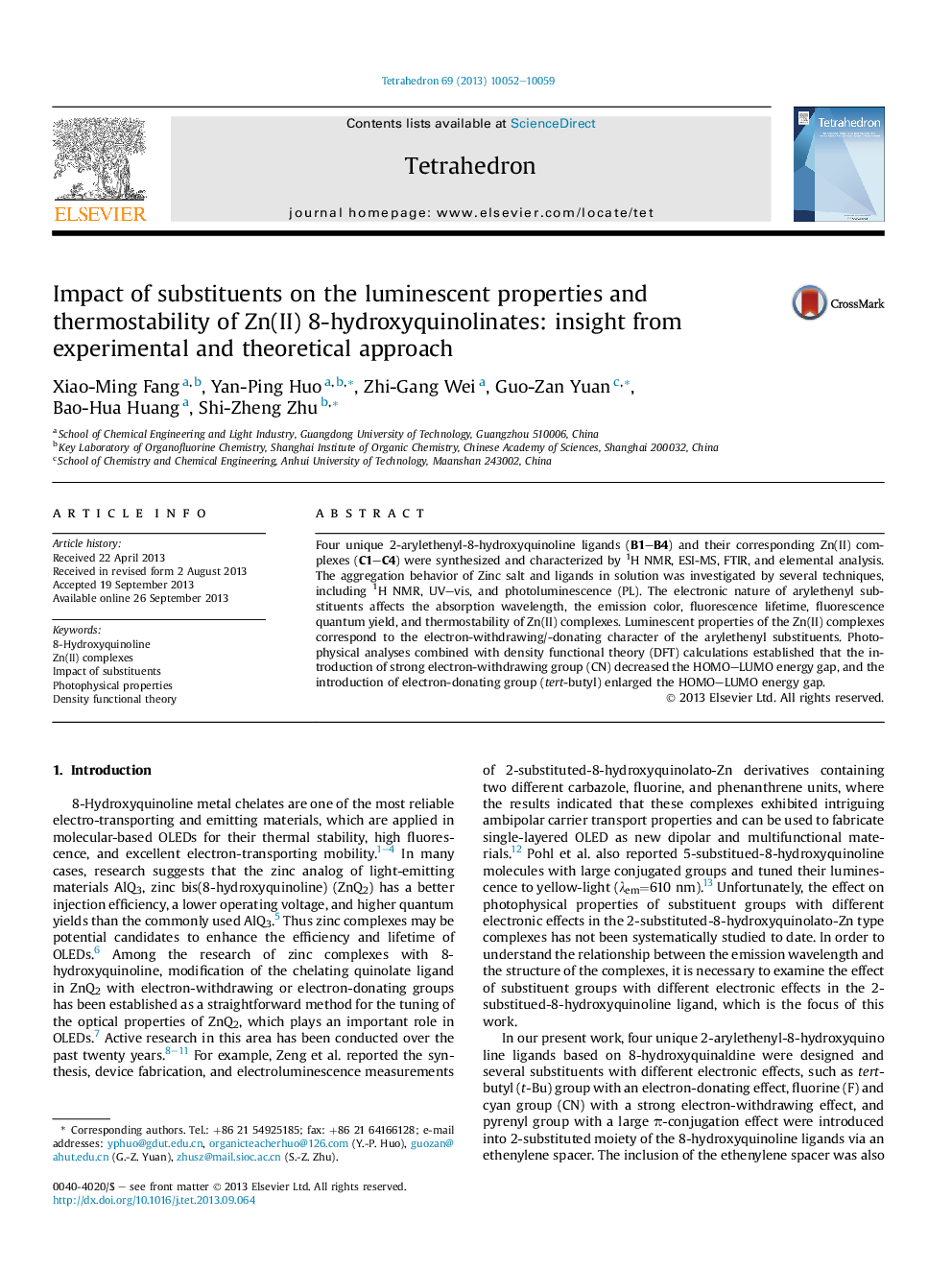| کد مقاله | کد نشریه | سال انتشار | مقاله انگلیسی | نسخه تمام متن |
|---|---|---|---|---|
| 5217590 | 1383300 | 2013 | 8 صفحه PDF | دانلود رایگان |

Four unique 2-arylethenyl-8-hydroxyquinoline ligands (B1–B4) and their corresponding Zn(II) complexes (C1–C4) were synthesized and characterized by 1H NMR, ESI-MS, FTIR, and elemental analysis. The aggregation behavior of Zinc salt and ligands in solution was investigated by several techniques, including 1H NMR, UV–vis, and photoluminescence (PL). The electronic nature of arylethenyl substituents affects the absorption wavelength, the emission color, fluorescence lifetime, fluorescence quantum yield, and thermostability of Zn(II) complexes. Luminescent properties of the Zn(II) complexes correspond to the electron-withdrawing/-donating character of the arylethenyl substituents. Photophysical analyses combined with density functional theory (DFT) calculations established that the introduction of strong electron-withdrawing group (CN) decreased the HOMO–LUMO energy gap, and the introduction of electron-donating group (tert-butyl) enlarged the HOMO–LUMO energy gap.
Figure optionsDownload as PowerPoint slide
Journal: Tetrahedron - Volume 69, Issue 47, 25 November 2013, Pages 10052–10059